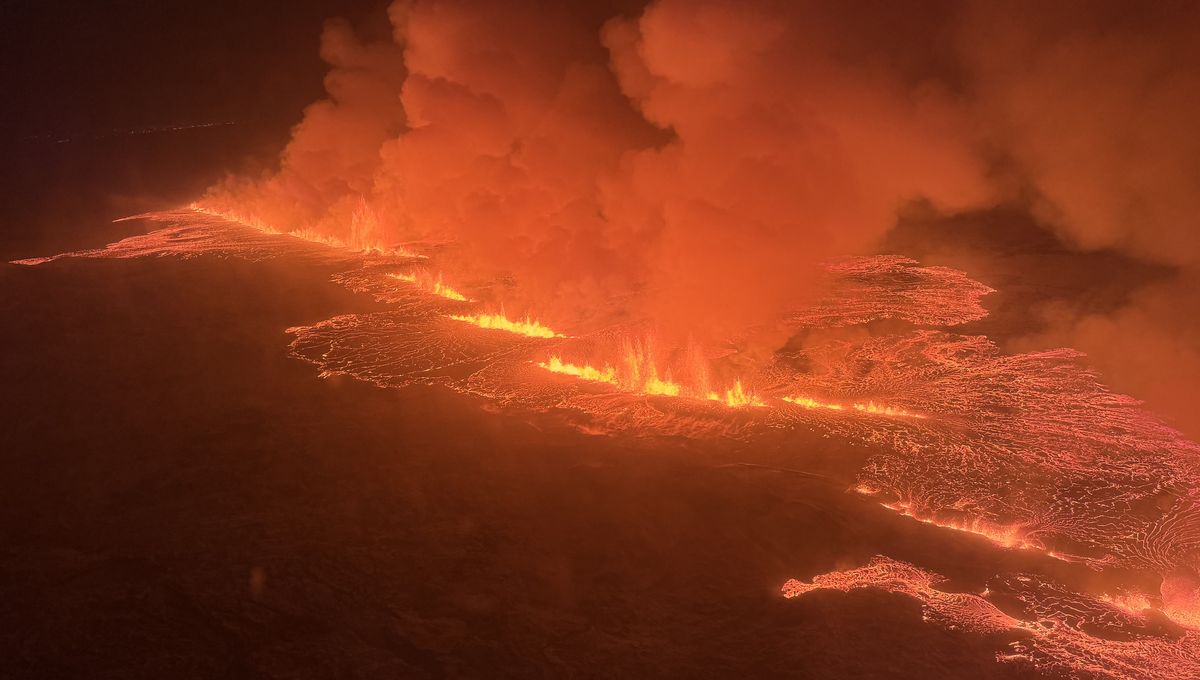
At 10:17 pm UTC last night, a major eruption shook Iceland. The event has been expected for a while, but that makes it no less spectacular. It started with a series of strong quakes, and about an hour later lava fountains appeared from cracks in the ground. The fissure is currently about 4 kilometers (2.5 miles) long, with the lava flowing at a rate of around 100 to 200 cubic meters per second.
Since late October, the Reykjanes peninsula of southwest Iceland has experienced intense geological activity. Quakes were the prelude to an eruption and in preparation for it, the fishing town of Grindavik was evacuated, leaving the 4,000 inhabitants in temporary accommodation. The nearby Blue Lagoon geothermal spa, a well-known attraction, was also closed for safety reasons.
The fissure is located a few kilometers from both locations but experts do not think there are any risks to either at the moment. The town of Grindavik has experienced damage with streets cracking as the build-up of magma took place under the Reykjanes peninsula.
The Fagradalsfjall system lies parallel to the fractures and it had not seen a volcanic eruption for 6,000 years before the first one in 2021. Since then, there have been three eruptions in the Reykjanes Peninsula. The area is no longer dormant. Based on the volume of magma that has been estimated to lie underneath the region, experts are concerned that this eruption will be bigger than the last three combined. They are monitoring the situation closely. A meeting of scientists was scheduled for this morning, but the eruption seems to be less intense now.
“The intensity of the volcanic eruption, which started about four hours ago, is decreasing. This is evident from seismic and GPS measurements. The fact that the activity is decreasing already is not an indication of how long the eruption will last, but rather that the eruption is reaching a state of equilibrium,” said the Icelandic Met Office about 3 am local time on December 19.
Currently, the area is not accessible to the public unlike the previous three eruptions in the area, which quickly became tourist attractions. Still, the light of the eruption can be seen at a distance, even from the capital of Iceland, Reykjavik, 42 kilometers (26 miles) north of the eruption.
While the eruption is intense, it doesn’t appear it will affect air travel like the eruption of Eyjafjallajökull back in 2010. Iceland’s foreign minister, Bjarni Benediktsson, said on Twitter, that “there are no disruptions to flights to and from Iceland, and international flight corridors remain open.”
You can see the eruption live on many public webcams, which are streaming the eruption, such as this or this.
Source Link: Iceland Volcano Spectacularly Erupts In 4-Kilometer-Long Fissure